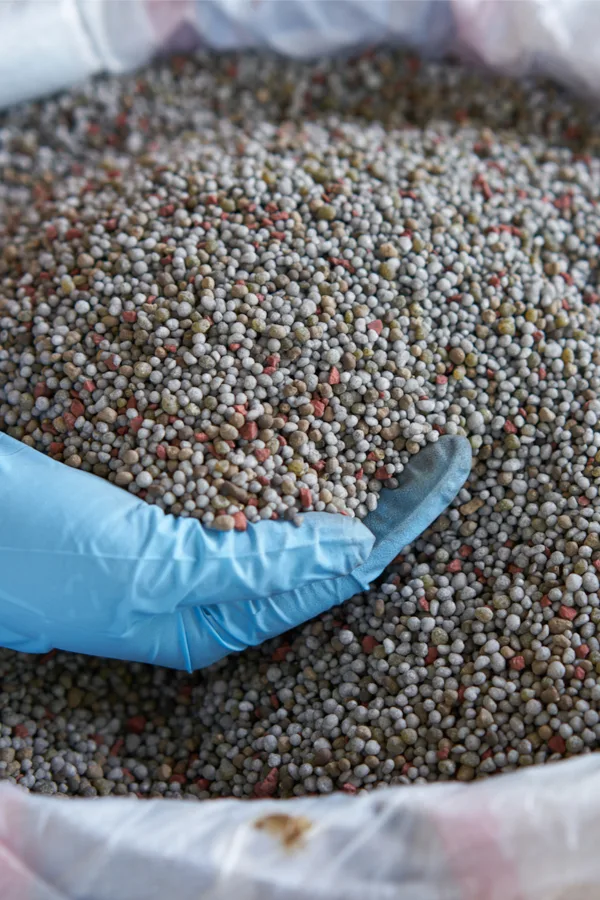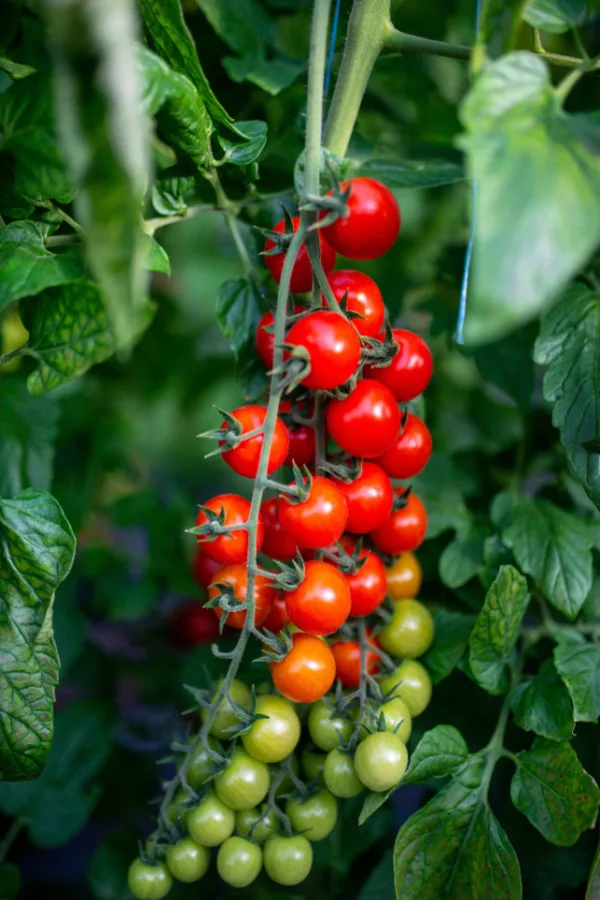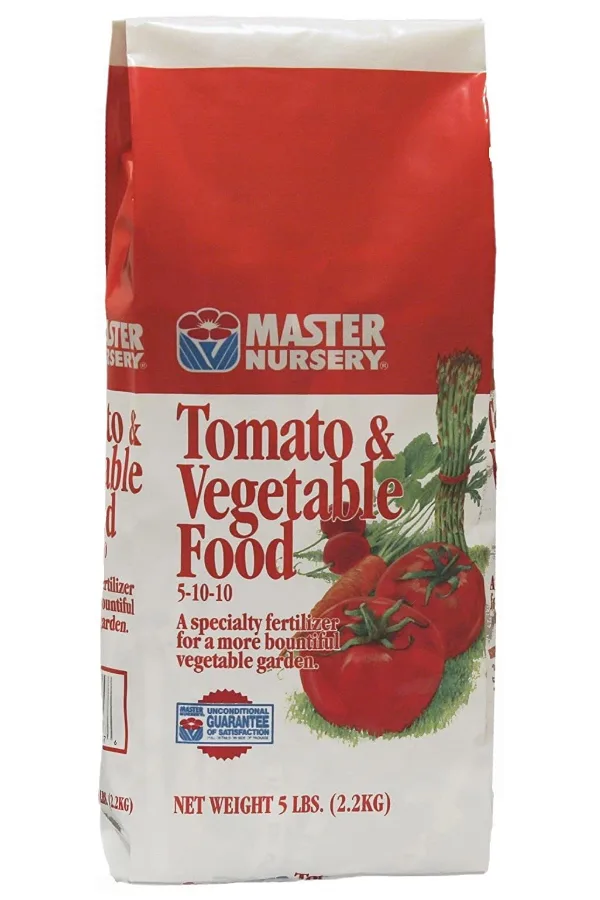One of the more confusing topics for gardeners is trying to understand just exactly what the N-P-K ratio on the label of their fertilizer bag means. Especially when it comes to the health and well-being of their vegetable garden, flowers and lawn.
Fertilizing can play a big role in the success of a plant’s health and productivity. Whether it be annual flowers and vegetable plants, or perennials, shrubs and trees – all plants need nutrients to survive. But giving each type of plant the right mix of nutrients is a huge key to fertilizing success.
Although plants draw nutrients from the soil, sometimes they require more than is available. This is especially true of annual flowers and vegetable plants.

Both use a tremendous amount of resources to flower or create edible crops, and they can quickly deplete the soil of the nutrients they need. And although perennials, shrubs and trees don’t require the same high level of nutrients, they too can deplete the resources available in the surrounding soil over time.
The Need For Fertilizing – Understanding N-P-K Ratios
In all of the aforementioned cases above, applying fertilizer to the plants and the soil around them can help fill the nutrient void. In the process, that extra power can help keep your plants healthy, vibrant and thriving.
But how you fertilize, and more importantly, what you fertilize with can make all the difference! And that is exactly where understanding what the N-P-K ratios and labels on the fertilizer you are using comes into play.
Although plants need a wide variety of micro-nutrients to survive, there are three that stand out from the crowd when it comes to providing major power to a large majority of plant life. Those three are Nitrogen (N), Phosphorous (P) and Potassium (K).

The N-P-K Ratio
Together, the three nutrients are the basis of the N-P-K ratio number listed on a fertilizer bag. The N-P-K set of numbers refers to the exact ratio or weight of Nitrogen (N), Phosphorous (P) and Potassium (K) that is present in a specific bag or container of fertilizer.
As an example, a 5-5-5 set of numbers on a fertilizer bag would mean that it contains 5% nitrogen, 5% phosphorous and 5% potassium. Likewise, a 5-10-10 ratio would correlate to a 5% nitrogen ratio, and a 10% ratio of phosphorous and potassium for that specific fertilizer.
So what makes up the rest of the bag? Well, it all depends on the fertilizer. Some contain small portions of other nutrients that are important as well, such as calcium, magnesium, copper and sulfur. But most often, the large majority of the additional ingredients are simply fillers.
It’s not that fillers are bad or a way to simply fill the bag. Fillers are actually inert substances such as sand or grit that weigh down the nutrients and make them easier to apply. Without them, it would be extremely difficult to apply.

So now that we know what the N-P-K number stands for, it’s time to cover what it all relates to with plants – and that means understanding what each of the “Big Three Nutrients” can do for plants. As you will see below, selecting the right ratio will depend on what plant you are fertilizing. In addition, it also will depend on what results you want from the plant.
Selecting The Right Fertilizer For Your Plants – Understanding N-P-K
Each of the three major nutrient minerals fill a different need when it comes to a plant’s growth. To know what fertilizer, or more importantly, what fertilizer ratio is best for your plant, it is extremely important to know what all three individually do for plants.
With that in mind, here is quick breakdown of each, along with what they provide to plants:
Nitrogen – How To Understand N-P-K Ratios
One of the most important nutrients of all for plants is nitrogen. And it is indeed a power-packed energy source! But as you will see, it is not the end all to fertilizing. And too much nitrogen in some cases can actually hurt production, especially for vegetable plants.
Nitrogen is what makes grass growth thick, luscious and dark green. It is also the nutrient responsible for creating a full canopy of healthy foliage on vegetable plants, annuals and perennials. In fact, when it comes to powering any type of leaf, stem and foliage growth – nitrogen is the go-to nutrient.

The higher the first number in the N-P-K ratio, the more nitrogen it will have in it. When you are trying to power plant growth and leaves, more nitrogen will help. This is exactly why if you are fertilizing a lawn, you want a fertilizer with a high nitrogen number and low phosphorous and potassium ratios.
But, and this is key to know – too much nitrogen in a mix can be detrimental. Especially when you are trying to get your plants to produce more blooms or vegetables.
A high number of percentage of Nitrogen for annual flowers and vegetables will create a plant with tons of foliage – and no fruit or flowers. That is exactly why when fertilizing these types of plants, you need a different N-P-K strategy.
Phosphorous – How To Understand N-P-K Ratios
Unlike Nitrogen, which powers plant growth, phosphorous powers blooms and fruiting. Want more flowers on your petunias and more tomatoes and peppers on your vegetable plants? Then select a fertilizer with a larger percentage of phosphorous.
Phosphorous is also key in developing strong root systems. That in turn not only helps anchor plants firmly in the soil, but also allows a plant to absorb more nutrients from the soil as well.
As a general rule of thumb, 5-5-10 fertilizer ratios are excellent choices for promoting stronger flowering and more vegetables. There is still enough nitrogen to power plant growth, but the higher phosphorous level will keep a plant’s concentration on producing more blooms and fruiting, and not too much foliage growth.
It is exactly why using compost or worm casting will help to power more flowers and veggies. Both have balanced power without too much nitrogen. (See: How To Fertilize Tomatoes With Compost)
Potassium – How To Understand N-P-K Ratios
So where does potassium fit into the picture? Well, as a member of the “Big Three” it is certainly still very important.
For starters, potassium helps a plant to stay strong and vibrant. It also helps it fend of disease and pests as well. Think of it as the ultimate multi-vitamin for plants. While nitrogen powers the growth and phosphorous powers blooming – potassium keeps it all running smoothly.
Without enough potassium, plants can suffer quickly, and succumb to disease quite easily. When selecting for vegetable plants and annual flowers, always be sure the potassium levels are near the same level as nitrogen and phosphorous.
How To Select The Right Fertilizer – Understanding N-P-K Ratios
When it all comes down to selecting the best fertilizer for the job, here are some great base guidelines to success:
- To power grass or foliage only plants – select fertilizers with higher nitrogen ratios.
- For powering vegetable and annual flowers, look for fertilizers with more Phosphorous and Potassium. One of the best ratios for these plants is a 5-10-10. Product Link : Master Nursery Tomato & Flower Food 5-10-10
- For perennials, shrubs and trees, select all-purpose ratios the provide a steady but smaller supply of all three. For these types of plants, look for 5-5-5 and 10-10-10 N-P-K ratios.
Here is to better understanding N-P-K ratios, and to powering your plants like never before!
Follow Our Facebook Page For Great Gardening Tips And Advice! This Is My Garden Facebook Page
This Is My Garden is a garden website created by gardeners, for gardeners. Jim and Mary Competti have been writing gardening, DIY and recipe articles and books and speaking for over 15 years from their 46 acre Ohio farm. They publish three articles every week, 52 weeks a year. Sign up today to follow via email, or follow along!


